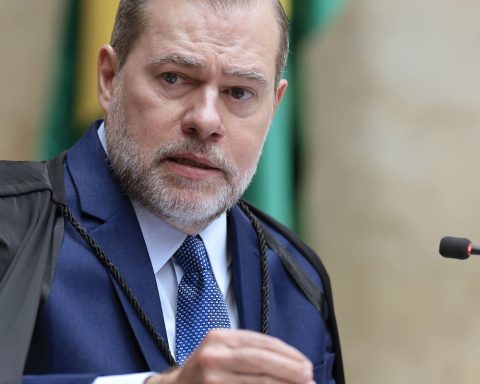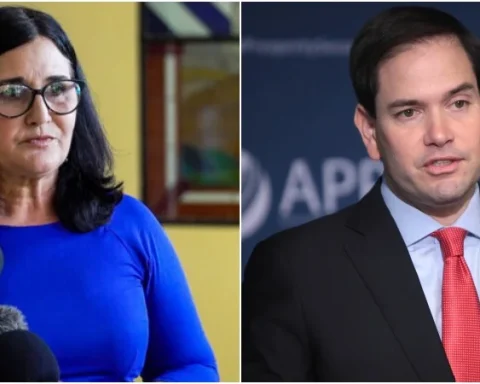Exactly 100 years ago, the Municipal Theater in São Paulo opened its doors to an exhibition of painting and sculpture, soirees and musical performances by composer Villa-Lobos and pianist Guiomar Novaes. This event, which took place between the 13th and 17th of February 1922, came to be known as the Week of Modern Art, considered an official landmark of the modernist movement in Brazil.

The main names of the event were the writers Mário de Andrade, Menotti del Picchia and Oswald de Andrade and the artists Anita Malfatti and Di Cavalcanti. The idea was to provoke the press, make a lot of noise, to present avant-garde ideas.
“Certainly, the agents of the week, the artists who made this festival, had in mind this idea of having an impact on the media, of making noise, of aligning themselves with an avant-garde idea, of challenging traditions”, said Heloísa Espada, curator from Instituto Moreira Salles (IMS), an organization that last year held a series of lectures [disponíveis no site da instituição] to discuss the event together with the Museum of Contemporary Art (MAC) and the Pinacoteca do Estado.
The week was held shortly after the end of World War I and the Spanish flu pandemic and in the year in which Brazil celebrated the centenary of its independence.
São Paulo began its industrialization process, with the economy still based on coffee. Brazil was modernizing and some intellectuals and artists of the time, influenced by the European avant-gardes, also proposed a new look at Brazilian art.
“The idea of modern art ends up being related to the idea of the city, with the creation of urban spaces. This moment, at the beginning of the century, is a moment of urbanization, of transformation of cities, of modernization”, said the curator of the IMS.
“São Paulo began to develop with the coffee trade in the second half of the 19th century. And whoever finances the week, who puts money in for the week to exist, is a coffee elite that earns money in the countryside, on the farms, but does not want to more living on farms; who have the possibility to travel abroad and want to live in a city that has the benefits of modernity. It is the wealth of the countryside that pays for this idea of modern art. This urbanization, this development, is fostered by this wealth that came mainly from the coffee plantations,” he explained.
The seed of the Modern Art Week was planted in 1921, at a meeting at the Grande Hotel da Rotisserie Sportsman, where today is the São Paulo city hall. There, intellectuals and artists met with the writer and diplomat Graça Aranha.
“On that occasion he [Graça Aranha] had contact with this small group formed by Di Cavalcanti, Mário de Andrade, Oswald de Andrade, Guilherme de Almeida and many others. Anita Malfatti is invited to participate in this meeting. She goes with a girl, a friend, because it wasn’t good for her to go alone, since she was single and a woman. The idea of having a great event came up, bringing together arts such as painting, poetry and music, as well as food”, said Luiz Armando Bagolin, professor at the Institute of Brazilian Studies (IEB) at the University of São Paulo (USP).
Graça Aranha came up with the idea for the group to look for Paulo Prado, a major coffee exporter in São Paulo. “They then meet Paulo Prado, at his house in the Higienópolis neighborhood, and that’s where the idea of the week comes up. It was Paulo Prado who suggested the name [do evento] and financed it”, highlighted the USP professor.
Months after the meeting, the Municipal Theater hosted an art exhibition in its lobby and three nights of literary and musical sessions. The event opened with a lecture by the writer and diplomat Graça Aranha, on February 13, 1922.
The program also included the reading of Manuel Bandeira’s poetry, called the frogs, a critique of Parnassianism – a literary movement that was concerned with making poetry: art for art’s sake. For their obsession with precision, the Parnassians were criticized by modernists who preached aesthetic freedom. Bandeira’s reading was booed by the audience. In fact, boos and criticism were the keynote of the entire week. And that’s what made it a success, in the eyes of the artists responsible for the event.
“The reading they [os modernistas] what they did, at the end of the week, was that they managed to provoke the macaws. Who are the macaws? The journalists. the mario [de Andrade] says: ‘the macaws took the bait. The macaws were provoked and there we succeeded’. The week, when it happened, was a very successful event from the advertising point of view, due to a propaganda strategy”, described Luiz Armando Bagolin.
“Unlike all the individual and collective initiatives that had happened before, this was the first time that this had attracted the fury of the macaws. In their time, the week was not so important for the works that were presented – and many of them were not even modern. But how this propaganda strategy generated a chain reaction in the press”, added the IEB professor and curator of the exhibition Era uma Vez o Moderno, on display at the Federation of Industries of the State of São Paulo (Fiesp).
historic building
Before the week, other modern cultural initiatives had already been carried out in the country, such as the two individual exhibitions by Anita Malfatti, in 1914 and 1917.
“It is necessary to emphasize an issue that seems to me to be of fundamental importance: modernism in Brazil does not start with the week. This idea that the week is coming, presents works that mark a break with what was being done, is a false idea. There were many initiatives before the week and after the week and, to the set of all these initiatives, some individual, others collective, we call Brazilian modernism”, explained Bagolin.
The Modern Art Week only became a milestone many years after it was held, in a process of historical construction.
“We know today that, for example, immediately after the week, in the 1930s, nobody talked about the week. This idea of the Modern Art Week is something that was also built by historiography. And it was only in the late 1940s, in the 1950s, when modern art museums were formed in Brazil and also when the first Bienal was launched, in 1951, that there was a whole process of rescue and public recognition of these names, mainly from the Anita Malfatti and Tarsila do Amaral, who did not participate in the week, but soon joined the group”, said Heloisa Espada, in an interview with Brazil Agency.
“It is necessary to say that there was a historical construction of the Modern Art Week narrative as a founding event of our modernism. This was built mainly with the help of the University of São Paulo (USP), starting in the early 1970s, especially when the university bought the collection from Mário de Andrade’s family and this collection was transferred to the IEB. Then you begin to see a series of research, which turns into master’s and doctoral theses, in two areas above all: the area of literary theory and the area of social sciences”, explained Luiz Armando Bagolin.
Furthermore, the book Plastic Arts in the Week of 22, written by Aracy Amaral, art historian, released in the 70s, helped to build the importance of the Week. “This work marked historiography”, highlighted Heloisa.
All of this contributed to the event taking on a positive, uplifting character. “We see how much, in fact, the subject of the week appears throughout history, also according to the convenience of each season. I think that talking about the Modern Art Week of 1922, one hundred years later, is remembering how the subjects are being constructed and what are the interests in talking about these subjects”, he said.
This is the first article in a series that Brazil Agency publishes over the next few days on the centenary of the Week of Modern Art.
*Collaborated Eliane Gonçalves, reporter for Rádio Nacional















